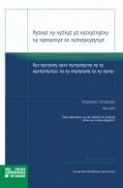- EAN13
- 9782930344294
- Éditeur
- Presses Universitaires du Louvain
- Date de publication
- 1 août 2005
- Collection
- Thèses de l'École polytechnique de Louvain
- Nombre de pages
- 173
- Dimensions
- 16 x 2,5 cm
- Poids
- 289 g
- Langue
- fre
Essays On The Interaction Between Monetary Policy And Financial Markets
Alain Durré
Presses Universitaires du Louvain
Prix public : 16,20 €
Despite the consequences of financial bubbles on economic activity, it is still an open question to what extent the monetary policy should react to sharp fluctuations of equity prices. This dissertation attempts to contribute to the debate with some theoretical and empirical analyses of the relationship between monetary policy and financial markets. Chapter 1 incorporates the effect of real equity prices on aggregate demand in a forward-looking expectations neo-Keynesian model. This effect arises either from a wealth effect or from a change in consumers' confidence. The objective function of monetary authorities depends on the output gap and the deviation of expected inflation from the target. A numerical simulation, based on US data, illustrates the quantitative importance of the financial market channel for various exogenous shocks. In Chapter 2, the variation of equity prices enters explicitly in the loss function of the monetary authorities while, at the same time, it affects aggregate demand. This modifies the optimal monetary policy by increasing the volatility of the nominal interest rate. Chapter 3 examines how the launch of the European single currency has affected expectations on future monetary policy by comparing the econometric results of a co-integrated VAR model on pre- and post- January 1999 data. Chapter 4 deals with diverse methodological issues related to the estimation of the Taylor rule, which represents Central Bank decisions by a single and stable function. Several interesting results emerge from the modelling of the Fed funds rate over the period 1987-2002. In particular, assuming a discontinuous and asymmetric response of the Federal Reserve to fluctuations of equity prices, corrects the apparent instability of the rule.


















